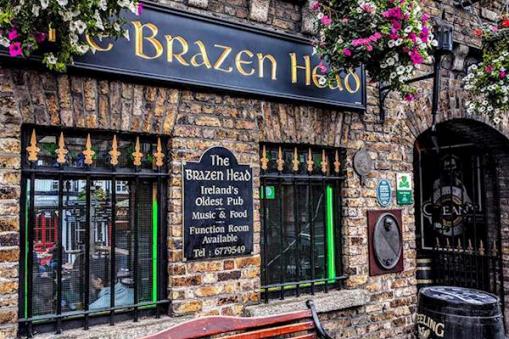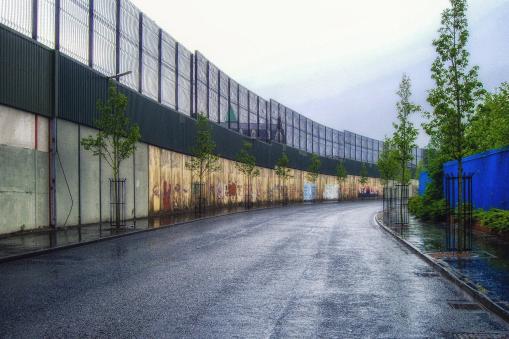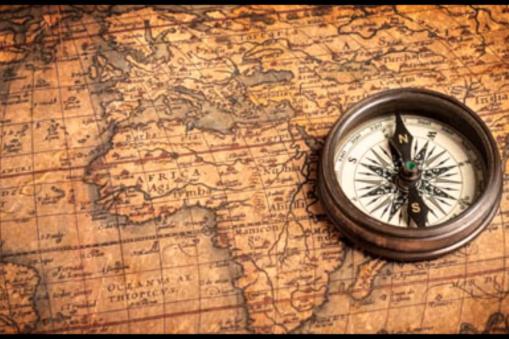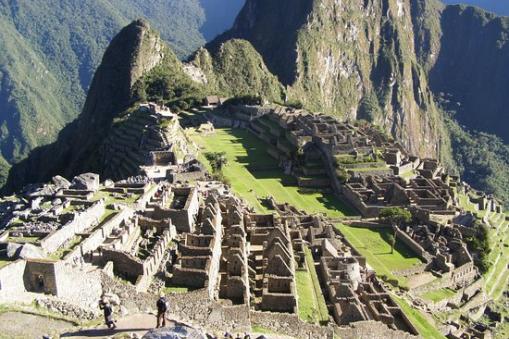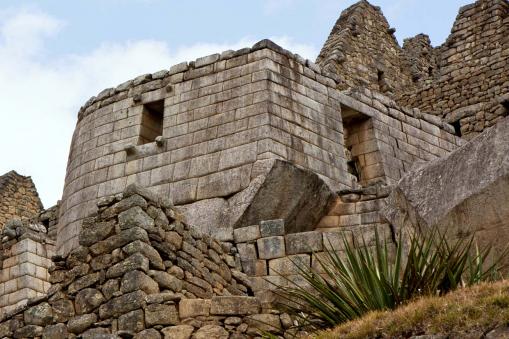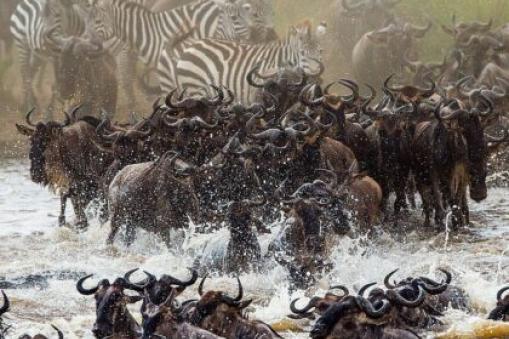Become a part of your journey
You are here
Further Afield's Journal
The Travel Nook
Irish Pubs - An Irish Institution
Some things you might not know about Irish pubs.
A Pub is an abbreviation for a public house, a place that is licensed to sell alcohol, cigarettes and pipe tobacco. The owner would live upstairs, running the establishment with the family or maybe employing a bar man or two. The name over the door may be the family name, a street name or named after some character or event of the area. For example, "The Hole in the Wall" is a pub in Dublin dating back to 1651. Affectionately known by locals as "The Holer". The pub nestles against Phoenix Park wall. Soldiers were forbidden to leave the Phoenix Park, but here, they were able to get a beer through an opening or hole found in the wall. Another interesting pub is the
"Gravedigger", a nickname for the pub that has been built into the walls of the Glasnevin Cemetery. The "Brazen Head", one of Ireland's oldest pubs is where Robert Emmet used the pub for planning the Rising of 1803. His rebellion failed and Emmet was hanged and beheaded in the nearby Thomas Street. Ironically the Hangman used to also drink in the Brazen Head.
Some pubs would have been grocery and hardware stores as well in days gone by, as are some to this present day. Another business may be that of an undertaker or auctioneer, not to mention a politician. Did you know, pubs were once allowed to store dead bodies! The Coroners Act of 1846 decreed a dead body had to be brought to the nearest public house for storage until further arrangements were made. The cool temperatures of the beer cellars slowed the decomposition of the bodies. This legislation was not removed until 1962, however the dual role of a publican and undertaker is still common in Ireland today.
Did you know that not all people in Ireland drink alcohol? In the early 1800's there was a very serious problem with the consumption of alcohol and drunkenness. The Temperance Movement began in 1838 by a priest named Father Mathew. His aim was to help people to abstain from drinking alcohol except for medical reasons. Even though he was a Catholic, the movement also involved the Protestant community. The success of The Temperance movement was brought to America and Canada, leading to Prohibition from 1920 to 1933. It had great success but it also brought with it illegality of the sale of alcohol and the crimes and criminals that are associated with these years. The Pioneer Total Abstinence Association was founded in 1998 by the Catholic Church. When a boy or girl in Ireland, reach the age of 12 or 13 years, they receive their Confirmation, at this ceremony they would be invited by the Bishop to take the Pledge as it's called, promising to abstain from all alcoholic drink until they were 18 years of age. It is not compulsory today and the Pledge also promises to abstain from taking drugs. The number of adult members of the association is approximately 350,000. Some people have continued to abstain throughout their life.
The pub is much more than just a premise to buy a drink or have a meal. The public house is a cultural and social hub of economic importance. Long ago, the public house was the only place, apart from churches, where working class men and pensioners would unwind and socialize, and a place where networks would be created. Prior to the 1960's Ireland's drinking establishments were for men only. It wasn't the law but few if any women would frequent a pub, or for that matter some pubs would not serve women. In pubs going back through the years there was an area called a "Snug", a cosy, quiet, comfortable place where a person might have a private drink. The Snug was a small room, close to the bar, yet less conspicuous for women to partake of a drink. A hatch or opening allowed the bar man to pass a drink to the patron. The local priest was also a user of the snug. Hence today these rooms are called "the confessional box". Today it is perfectly acceptable for men and women to visit the pub any day of the week.
Guinness is the hallmark of an Irish pub. People working in the pubs are experts in filling pints. Not only that, but they will regale you with jokes and gossip, give you the inside tips on horse racing; such and such is a sure thing for the 2:30 at Naas or the Gold Cup at Ascot. We have often heard people tell the barman, "I have drank Guinness at home and it never tasted as good as this". How many times have you heard that? Guinness is considered a bad traveller. You can have beer, lager, whiskey or other spirits; don't go over the top looking for Cocktails or Craft beers.
Traditional Irish music pubs are what brought about the revival of people young and old playing musical instruments for our entertainment. O'Donoghue's pub in Dublin has the proud boast of seeing many a novice starting a career that gave us all so much to remember. People like Luke Kelly and the Dubliners, Paddy Reilly, Jim McCann and song writers like Brendan Behan, Patrick Kavanagh and James Joyce to mention a few. Play writers, actors, film stars, sports men and women have all got some memorabilia on the walls of pubs. It's symbolic of the pubs in Ireland, particularly Dublin, to have the customers influence on some writer, none other than James Joyce in his book Ulysses, Sean O'Casey the "Plough and the Stars" and "Strumpet City" by James Plunkett. There are pubs that we refer to today as being the birth of "The Session", where musicians will congregate of an evening to play music, sing and maybe a solo dance, such as the twig or broom dance. No one is booked, no wages are paid, but for the love of music and to chat with friends, it just happens. Musical pubs are here in abundance, Taylors, The Merry Ploughboys, Toners, Tig Coile and Matt Molloy's. The Irish pub is an institution, a magnet for persons to converse on day to day issues, sport, politics, farming, house prices and so on. There are no strangers in the pub, only friends that have never met.
The cities and towns have a plethora of pubs. Favourite pubs in Ireland may differ among people. Clientele, the atmosphere, the bar person serving, all make up this unique establishment known as your local. When entering a pub, remove your hat and make your way to the bar. Don't start waving notes about with your arm in the air, once at the bar; the bartender will notice you as if he hasn't seen this stranger already. If you called a Guinness wait for it to be handed to you, it takes time to pour. Sip your drink, no chugging it down. Seating is scarce so unless that leg is in a cast or you're old enough to need a seat wait till someone offers you one. If the pub has a tradition of music, an area will be held for the musicians. When a rendition of a song is being given, lower the tone of the conversation a little. The pub doesn't stay open till the small hours as there are government regulations and rules regarding opening and closing times in addition to what age younger people can be on a licensed premise.
Did you know, until 1973 the only place alcohol was sold on St. Patrick's Day was at the Royal Dublin Dog Show? High attendance figures were guaranteed! Due to St. Patrick's Day falling as it does in the middle of Lent, a period of abstinence. The law was changed in 1973. In 1995 the Government introduced the St. Patrick's Day Festival. According to Diageo, St. Patrick's Day now sees over 13 million pints of Guinness being sold around the world - nearly four times the amount sold on an average day.
Partition of Ireland
Travel to Northern Ireland with our local guide and learn why the island of Ireland is divided.
Welcome, today we are travelling to Northern Ireland.
As we drive through County Meath I want to mention the farmland we're passing by. This is mostly grassland for the dairy and beef sector. We pride ourselves on the fact that our beef cattle are grass fed from once they leave the farmyards after the winter. The dairy cows go to grass towards the end of March, earlier for the south of the country. Of all the beef that we produce almost 90% is exported. Over 80% of dairy products are exported, butter, cheese, yogurt, powder milk etc. As we drive through County Louth we see fields after fields of barley and wheat, gently blowing in the wind as if to say welcome.
We cross the River Boyne using the Mary McAleese Bridge. Named after our 2nd Lady President (from Belfast). We hear the River Boyne mentioned a few times today. As we leave County Louth we cross into County Down and Northern Ireland. Border crossing is easy, as there are no checkpoints.
Before we arrive in Belfast we have to talk about the division of this island. To deal with this issue we have to go back in history. King Henry VIII of England was declared King of Ireland in the 1541 by the Irish parliament; prior to this Kings of England were Lord of Ireland. Having severed his connections with the Catholic Church he needed to rule supreme. To do this he introduced a surrender and regrant rule, in which landowners would surrender the lands to the monarchy and then have it regranted back to them with a title such as Earl or Duke and they also had the protection of the English army from anyone that had a notion of attacking them. Now should these landowners rebel against the monarch their lands would be confiscated. This law was continued for King Edward and Queen Mary reigns. Now comes Queen Elizabeth 1st. Her entitlement was questionable. When Henry VIII declared his marriage to Anne Boleyn invalid, it rendered her illegitimate. The rightful successor was Mary Queen of Scots. Her grandmother Margaret was Henry VIII's sister. The fact that Mary was Catholic, ruling a Protestant parliament gave Elizabeth the throne. Mary's father was James V of Scotland, he died when she was six days old and she was appointed Queen Mary I of Scotland. Her son James VI was to become James I of England.
The landowners in Northern Ireland (Ulster) had not agreed to hand over their lands and so Elizabeth was threatening to bring in an army. The O'Neill's and the O'Donnell's raised an army to begin what was known as the "Nine Years War" having had many successes. The Spanish King Philip II had promised help in these wars and sent a sizable army. The only problem was they landed in Kinsale 300 miles from where the battles were being fought. The armies from the north march down to Kinsale and in 1601 they suffered a defeat that was to change Irish history.
The wars ended in 1603 the same year as Elizabeth died. Now the Stuarts of Scotland take the throne of England. The lands in Northern Ireland were confiscated. The O'Neills, the O'Donnell's and the other landowners were to leave Ireland forever in what is known as "The Flight of the Earls". Our culture changed at this point. Our laws, which at that time were "The Penal Laws", were gone as was many of our customs. Settlers from Scotland and Northern England were granted lands. The Irish people that owned the land were now employed to work these lands. A Rebellion in 1641 was to cause another visitor to come and take reprisals for same, one Oliver Cromwell. This man had raised an army in England, was a general on the parliamentary side in the English Civil War and brought about the execution of King Charles I. The monarchy was ended, Charles's family fled to France until the restoration in 1660 of Charles II. One of the first things he did was to exhume the body of Oliver Cromwell and charge him with the murder of his father, Charles I. After Cromwell was found guilty, his head was placed on the spikes outside of the Tower of London. Now that is what I call, holding a grudge!
His son James II was to become King in 1685. A Catholic King, unacceptable to parliament. In 1688 James II son-in-law William of Orange (Netherlands) is invited to take the throne. The "glorious revolution" it is called. James fled to France to seek help, which he got, and them to Ireland. He raised an army of about 25, mostly Irish and French. William's numbers were 32,000.
"The War of the Two Kings goes down in history as "The Battle of the Boyne" fought in 1690 and is still remembered to this day on the 12th of July with marching bands, flags and the Lambeg drums. These marchers are from the Protestant side of the population.
Belfast has a population of about 320,000 and is a modern city with universities, colleges and a thriving technology centre. Once home to the largest ship building yards in the world, White Star Line and the Titanic, one of the greatest tourist attractions in Europe. Belfast is home to Van Morrison, Snow Patrol, James Galway, George Best, C.S. Lewis, Jamie Dorian, Mary McAleese and many more. Northern Ireland proudly boasts of people like Harry Ferguson (tractor) Lord Kelvin (temperature) Joe Dunlop (vulcanized rubber) present day James Hewitt, Liam Neeson.
Driving through the city, we go up the Falls Road, a Catholic area on one side of the Peace Wall and going through the gates we come down the Shankill Road, the Protestant residential area. Why did Catholics settle in one area and the Protestants in the other? Belfast is a relatively new established city. During the mid 1800's, at the time of the potato famine, which had a devastating affect on the entire country of Ireland, people drifted into Belfast from the outlaying farming areas, because of poverty, to start a new life and survival. They established their own communities with schools and churches, living in separation of each other with enormous emphasis on the religious divide. Religious rivalry existed between the two communities. The wall that divides the two areas was built in the early 1970's to separate the two sections and prevent the nightly incursions from either side with murder in their minds. This wall still remains today.
Farming in Ireland was run on a landlord and tenant basis for generations. The landlords owned 90% of the land with the farmers renting and working this land as tenant farmers with little or no rights. To rectify this, a home rule bill was brought up in parliament in London and due to be passed into law in 1912. The Protestants in Northern Ireland did not want anything to do with this bill, as the majority of the farming community on the whole of Ireland were mainly Catholics. Their slogan was, "Home Rule, was Roman Rule". An army was raised in Northern Ireland, called the Ulster Defence Association (UDA). A threat of civil war was now imminent in Ireland. Home Rule was to give the self-government for Ireland within the United Kingdom the three F's; Fixity of Tenure, Fair Rent, Free Sale of the tenants interests in the farm. The Home Rule Bill was shelved.
On the continent of Europe, war was also imminent and broke out in 1914. This was World War One. After the First World War, we had a War of Independence, which lead to the partition of Ireland, meaning the 6 counties of Northern Ireland, which had a Protestant majority under the jurisdiction of Great Britain. The remaining 26 counties of Ireland were given "free state status" to become a Republic in 1948. The 'troubles' as we know them today, started in 1968 with the aim of getting the British to relinquish the jurisdiction of Northern Ireland and continued until 1998.
The Good Friday agreement was signed in 1998 to draw somewhat of a closure to the troubles in Northern Ireland. The troubles lasted for over 30 years and cost 3,700 lives not to mention those injured. It is my hope that this agreement will remain.
Motivation to Travel and Explore
What motivates people to travel?
Learning is a strong reason why people love to travel; sometimes it's more educational than a college class. You may take joy in ordering a meal when you don't speak the language or trying to find your way in a foreign city.
What made the first explorer want to go further than they could see? Adventure yes but curiosity too. The need for food and return trade also drove people to explore.
For individuals it's no different. Advertising draws your attention to destinations. A sun soaked beach, a rain forest, a river or ocean cruise, to walk the Great Wall of China, to swim at the Great Barrier Reef, a safari drive in Africa, to look in awe at the gardens of Versailles. Lovers of art have an absolute treasure chest of galleries to choose from the world over. The world is the size of a pea, finitely speaking.
Christopher Columbus a seasoned sailor from Italy went to Portugal then Spain, having participated in several trading voyages in the Mediterranean and Aegean Seas. On expeditions to Africa Columbus was to gain a fountain of knowledge of the Atlantic currants flowing east to west from the Canary Islands.
The Asian islands near China and India were fabled for their spices and gold, making them an attractive destination for Europeans. However when Constantinople fell to Muslin domination the trade routes through the Middle East made travel eastward difficult. Columbus devised a route to sail west across the Atlantic to reach India believing it would be quicker and safer.
While Columbus accepted the world being round or sphere shaped he got the distance of the circumference completely incorrect. Other scholars of the time and earlier reckoned it to be about 15,000 miles, he estimated 6,000 miles at most. None of them were near the correct distance of 24,000 miles.
Having been financed by the then King Ferdinand and Queen Isabella of Spain in return for riches of gold and spices he set sail from the Canary Islands part of Spain off the coast off the coast of Africa with three ships. Land was sighted after 36 days sailing. The island was the Bahamas. Because of the people's colour he thought they were Indians. He claimed the inland for Spain and continued on to Cuba thinking it to be China. Returning back to Spain he got a tumultuous welcome. He was to carry out a total of four expeditions over the next 10 years. With each voyage his welcomes were becoming less hospitable, stories of the abominations committed by the Spaniards from the New World were filtering homeward.
Motivation to travel to the North and South poles were a test of mans endurance. The Norwegian Ronald Amundsen was the first to reach the South Pole in 1911. He had his sights set on the North Pole but the American Robert Peary had got there in September 1909. Amundsen changed his mind and headed south. The expeditions to the Antarctic became a challenge for these explorers. Robert Scott was a British explorer, who had already tried to reach the South Pole years before hand. He was ready to go again. Amundsen and Scott were rivals. Scott was ill equipped using ponies and dogs. Ponies eat more; they are bigger and have more difficulty through the snow and ice. Amundsen used dogs only a total of 97. He had also got going on the trip earlier. Amundsen got to the South Pole and back with all of his party. Scott got there a little over a month after Amundsen. The sad thing of there return, they all lost their lives. Others, who made the journey, were Shackleton and Wild. Edmund Hillary of New Zealander was the first man to conquer the three poles, climb Mount Everest 1953, South Pole 1958 and the North Pole in the company of Neil Armstrong 1985.
Travel broadens the mind a person once said. To travel, we experiment, we explore, we learn, we make friends and most of all we see the world is big but small when you plan to discover it.
Machu Picchu
Tucked away in the Andes, the ruins of Machu Picchu reveal the mysteries of the Inca Empire
Tucked away in the Andes, stands the most amazing archaeological structure chosen as one of the New 7 Wonders of the Modern World on July 7, 2007. This is the 15th-century Inca citadel located northwest of Cuzco on a mountain ridge 2,430 metres (7,970 feet) above sea level. This engineering work of art, balances on this ridge laid out in a series of terraces each one above the other. For over 500 years, the stonework supporting the layout stands with no mortar or cement. The ruins of Machu Picchu reveal the mysteries of the Inca Empire.
Yes evidence of the pressure exerted by the weight of the soil and stone shows that not all were successful. With an average rainfall of 70 inches we can understand why. These terraces built for farming purposes were for the growing of potatoes and corn. Water was needed for growth but it also had to be managed. Too much water and the mountaintop were eroded, too little and the crops failed. Parts of the dwellings are 2 and 3 stories high. It is believed that Machu Picchu was constructed as an estate home for the supreme ruler or emperor Pachacuti 1438 - 1472. He was the single ruler of the Inca Empire. Addressed as Chief Inca, Son of the Sun or Lover of the Poor, thought to have descended from the Sun. Like the Pharaohs of Egypt he took his sister for his Queen in the belief of true royal blood. The small American Indian people built one of the largest tightly controlled empires the world has ever known. Their skill in Government was matched only by their feats of engineering. Walls, roads and irrigation works constructed by these crafts people are still in use today. To appreciate the Incas achievements it helps to visualize the different terrain of Peru. Some of the world's driest deserts, looking upwards as the land rises to the jagged peaks of the Andes mountain range. The Inca Empire had ruled a population of 12 million people.
With the invasion of the Spanish however in the 1500's South America was under serious danger of being overthrown. The Spanish first overcame the Aztec Empire in Mexico. Crossing over to the west they discovered the Pacific Ocean in 1513. Sailing down the coast over a number of expeditions they went as far as present day Colombia, later to Ecuador, then to Peru. Having heard of the wealth in Peru the Spanish governor financed Francisco Pizarro to explore it. In 1533 under the guise of an act of friendship the 13th emperor came to dinner with the Spaniard. The Spanish had an army of 180 trained soldiers. The Inca Emperor was ordered to take the bible and convert to the new religion, he refused and the Spanish army attacked leaving thousands of the unarmed Incas dead. The execution of Atahualpa, the last Inca Emperor, marked the end of 300 years of Inca civilization.
Machu Picchu was never reached by the Spanish conquistadors and lay abandoned to the world until 1911 when an American explorer Hiram Bingham reached there with the help of some local farmers who were struggling to survive generation after generation had seen the end of the glorious Inca Empire.
AFRICA AT ITS FINEST
The Great Migration
This epic event, of millions of mammals thundering across the plains of Tanzania and Kenya, is one of the most spectacular sights that nature can offer. Over the months ahead various herds are forming. The one ingredient that it depends on is the weather. The migration has no time clock but as the scent of rain is in the wind the wildebeest get restless. Thousands upon thousands start to move and this event continues for months.
Leading the charge are the Wildebeest, next their colleagues, the Zebras, followed by thousands of Antelope. Young and old alike gather on the dry plains of the Serengeti, to start the trek north in a clockwise direction in search of food and water in the eco-rich Masai Mara National Reserve in Kenya. The Great Migration is a journey of almost 2,000 miles, an ongoing event throughout the year. The best time to see the Great Migration in the Northern Serengeti and Masai Mara is between July and October.
Following closely are the Predators, Lions, Wild dogs, Leopards and Hyenas. You may witness a kill - that's nature. Now look, there's a newborn calf, it's first feed of colostrum and its ready to run with the herd. Only the strong survive, an estimated 250,000 Wildebeest are lost annually but their birth rate is close to 350,000, enough to compensate for the natural loss of the herd. Their demise on the journey is not in vain. The rivers of Grumeti and the Mara are filled with crocodiles and the currents are just as unforgiving but the corpses of these animals contribute to the rivers ecosystem by adding 1,000 ton of biomass to feed the Serengeti Plains.
Why do the Wildebeest and the Zebras travel together? One compliments the other. Grasses that one won't eat the other will. Directions are another. One's ability to detect danger. What is it with this mass migration? Simply put it's for food or the lack there of. Since time immemorial humans and animals alike follow the food chain. Why in such large numbers? Survival and safety in numbers, with predators following close, waiting for an opportunity.
To watch this wonder is a lesson of nature in action. The Greatest show on earth has to be seen to be believed, and it's there on the plains of Africa.
